Cadaghi
Scientific name: Corymbia torelliana
POWO Status: Tree
IUCN Red List threat level: Least Concern
GPS Location: 17° 42′ 57.44″ N, 64° 49′ 50.97″ W

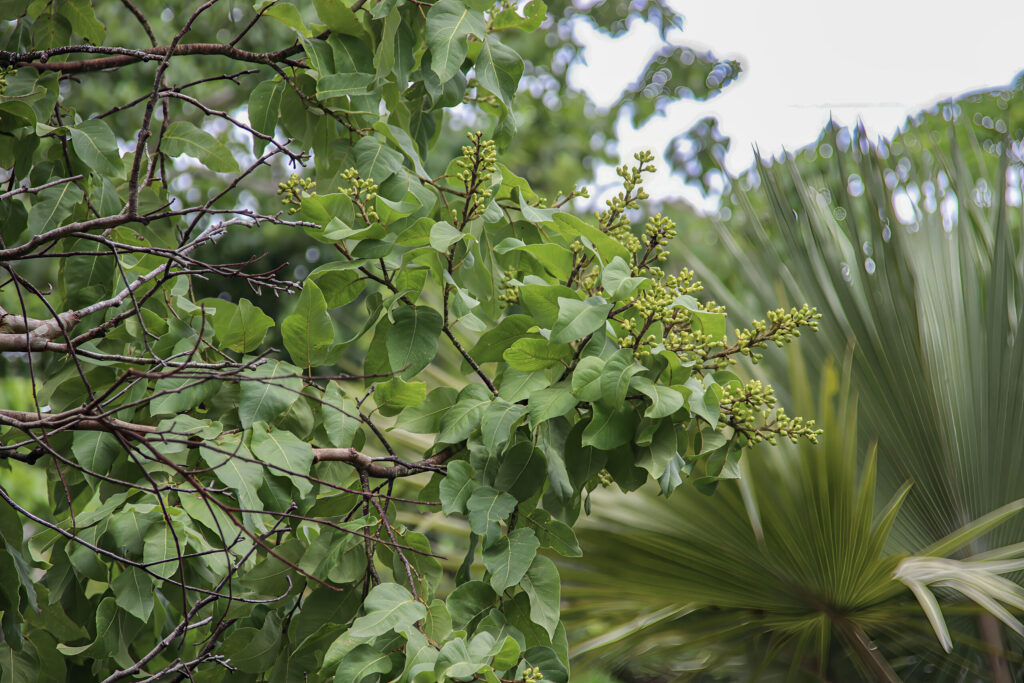
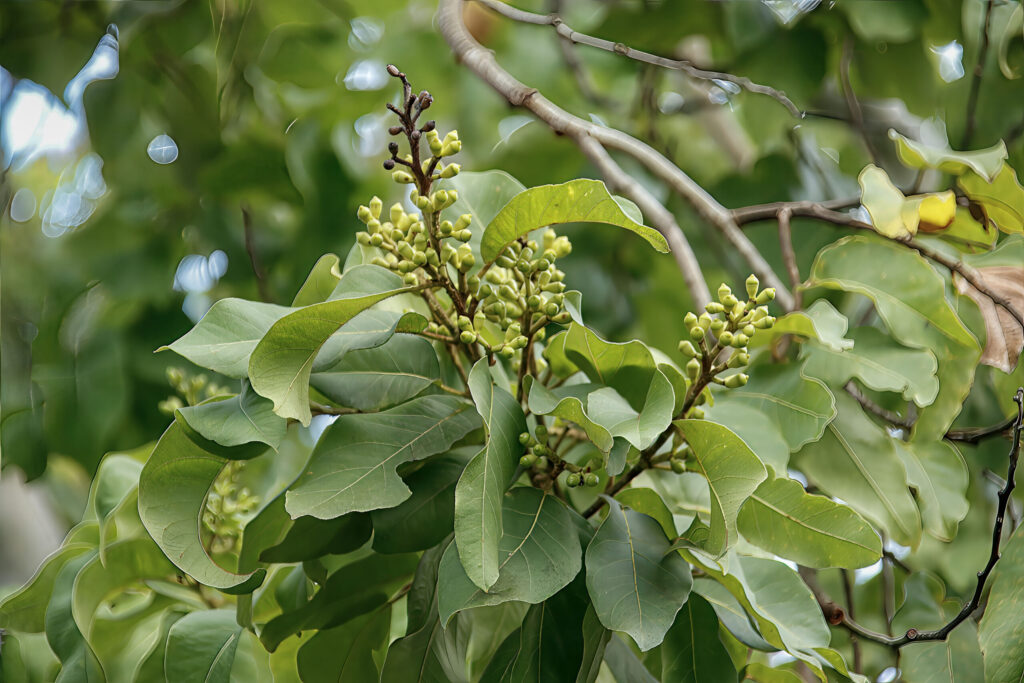
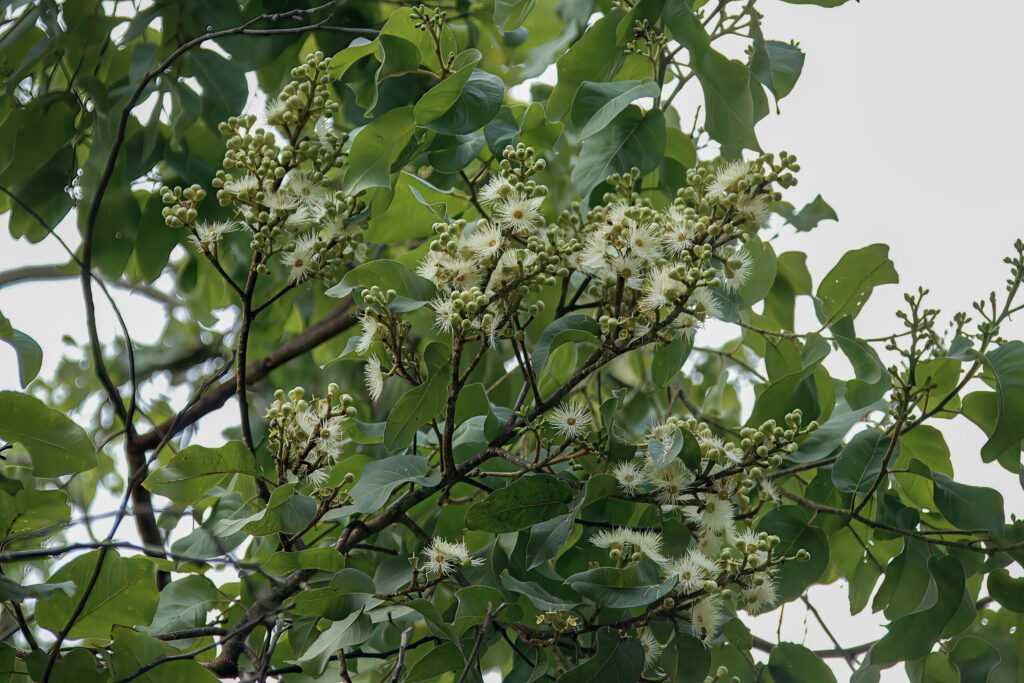
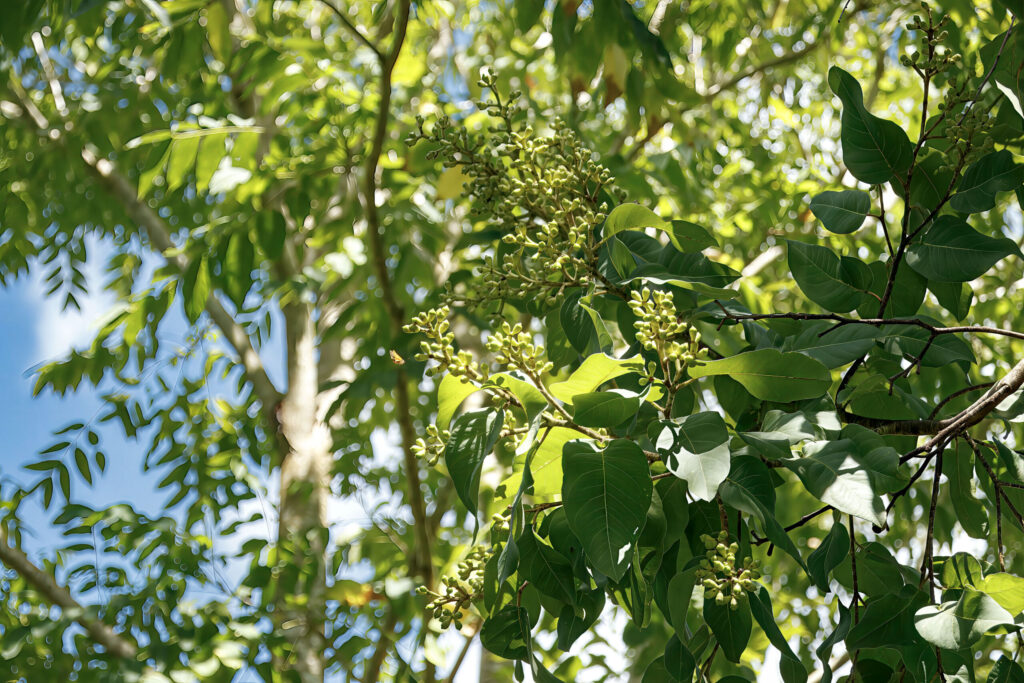
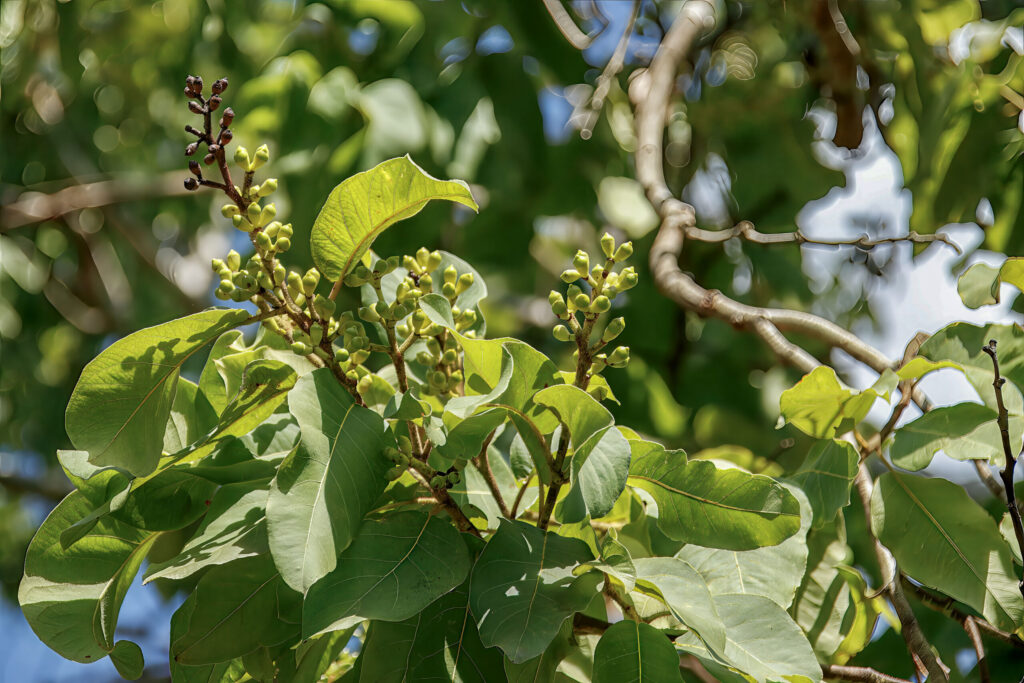
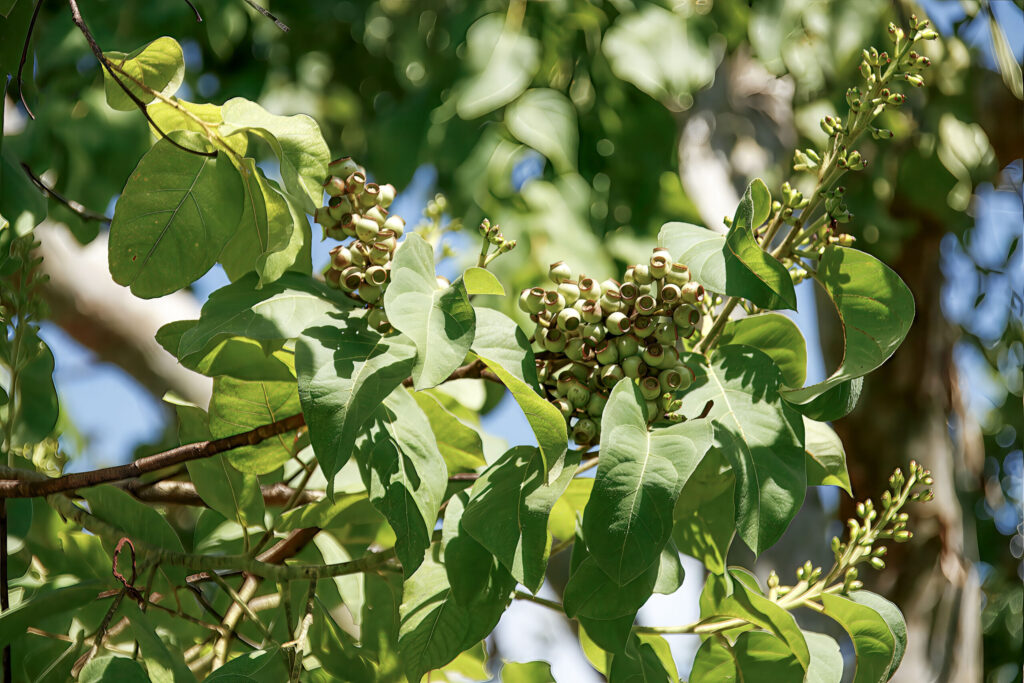
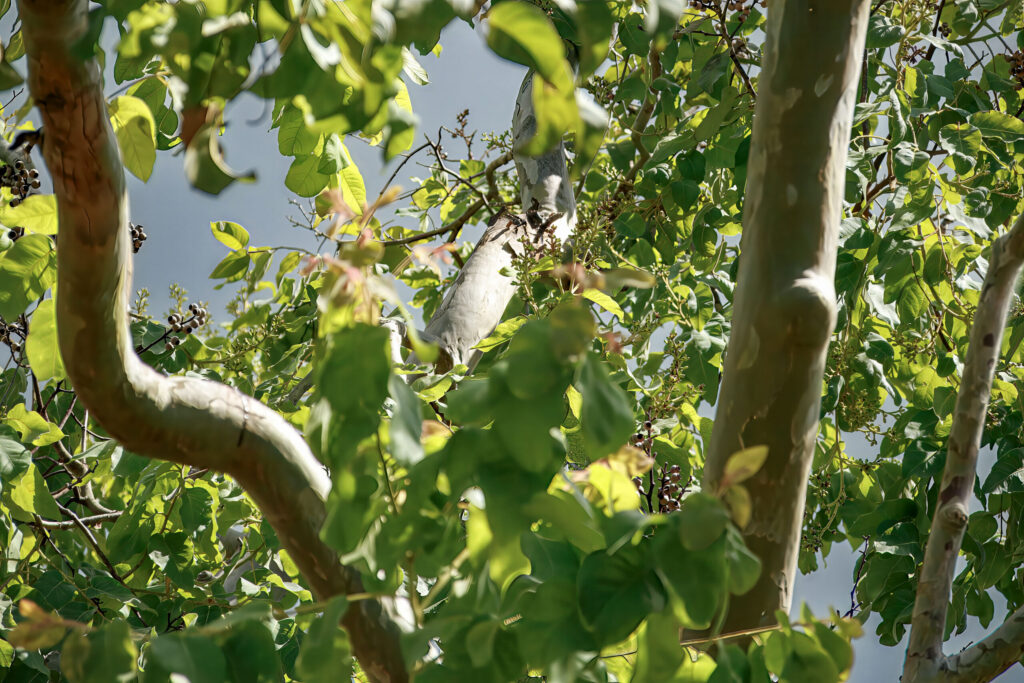
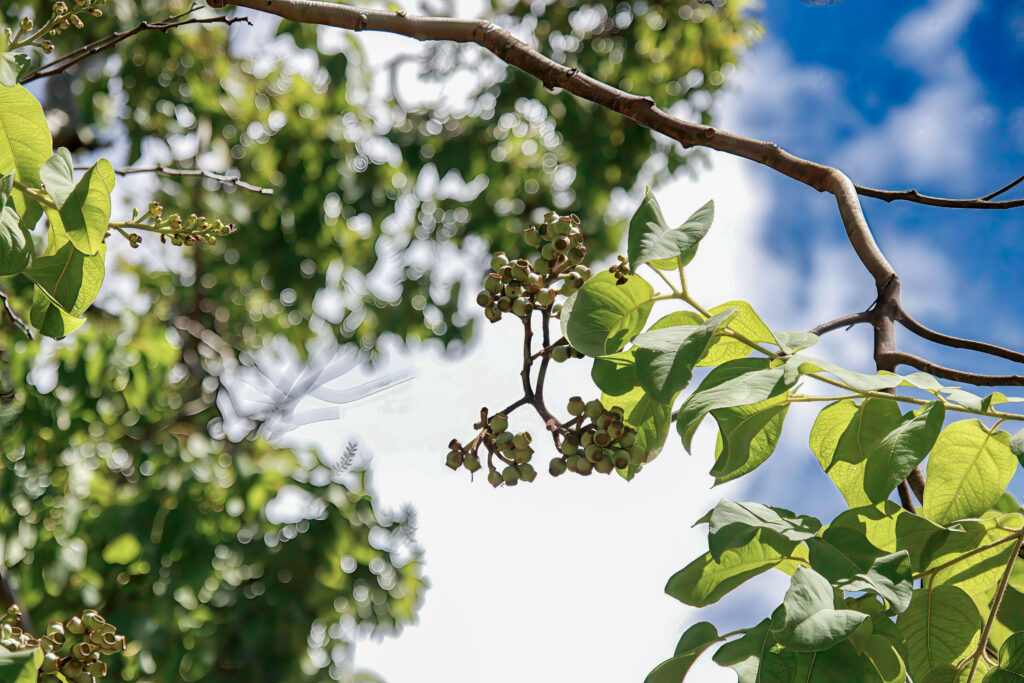
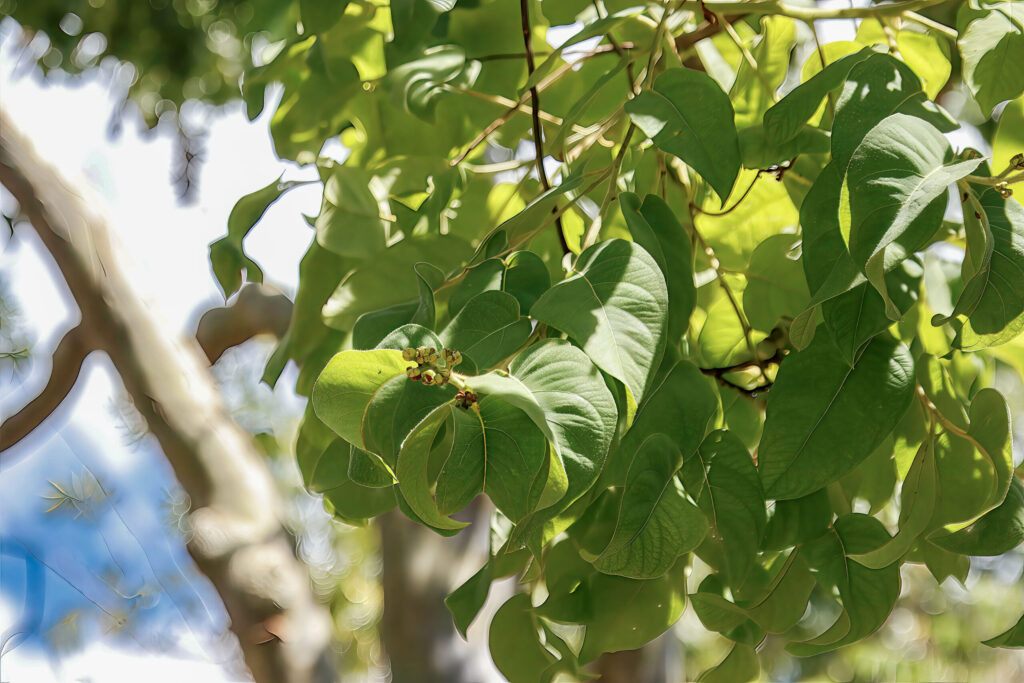
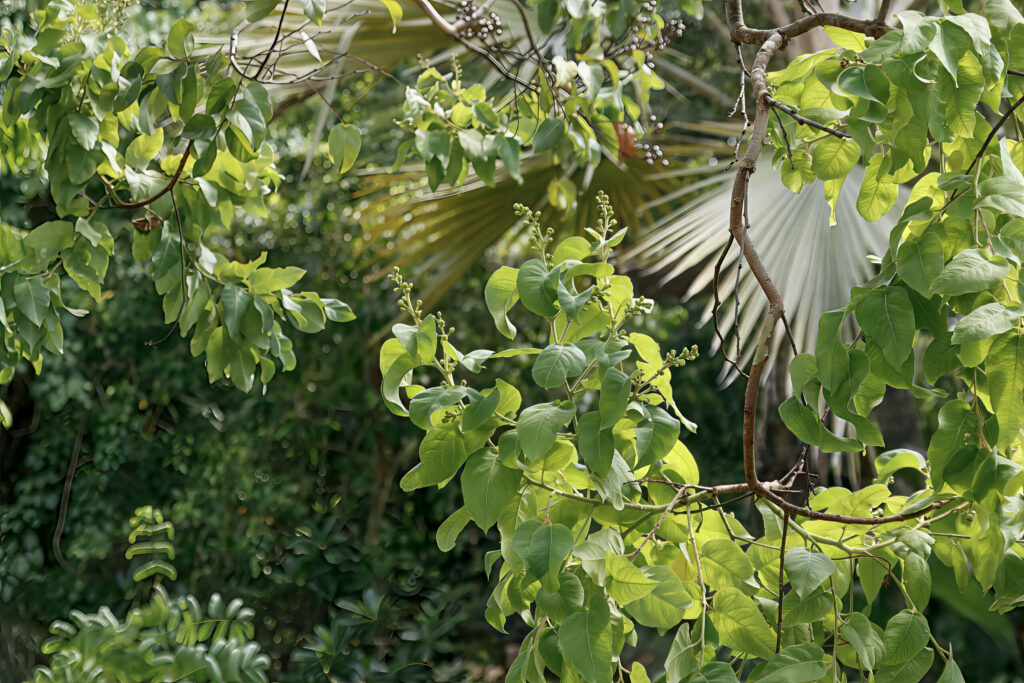
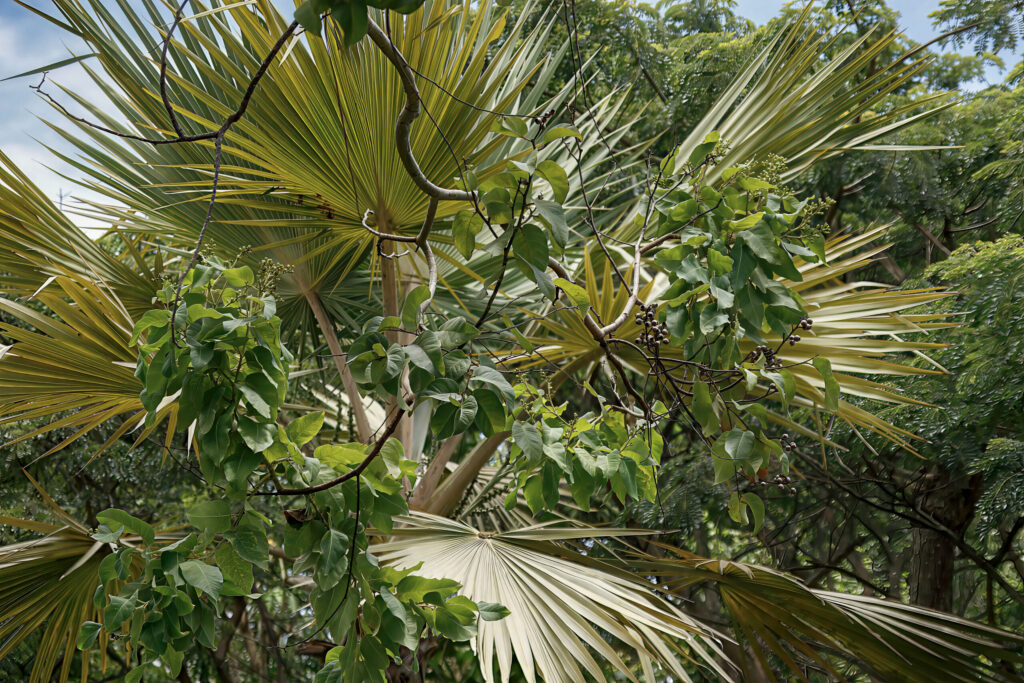
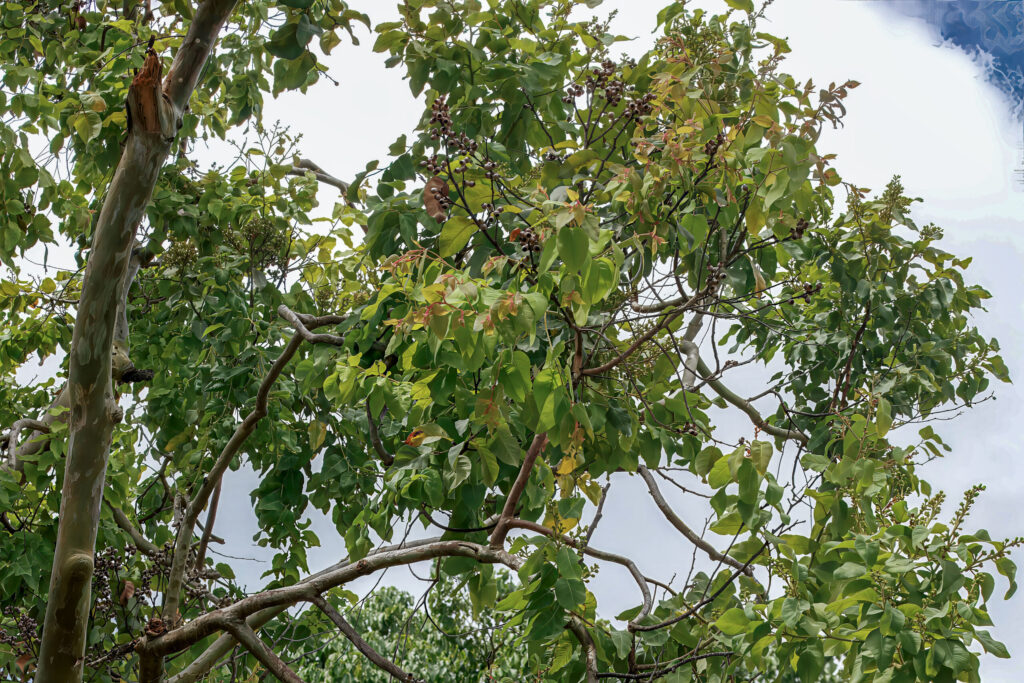
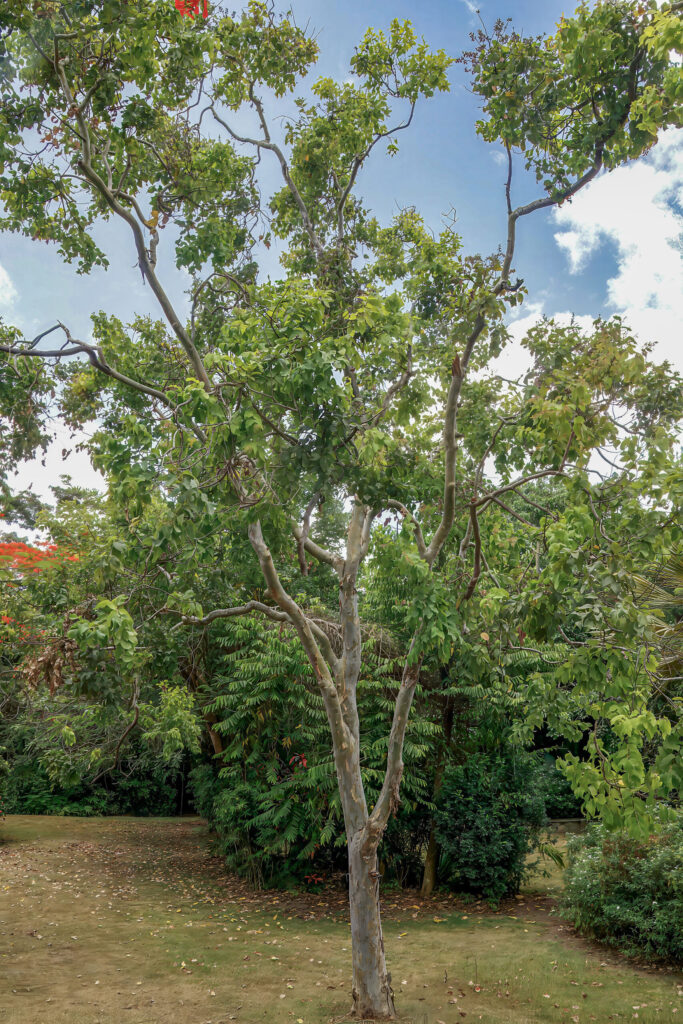
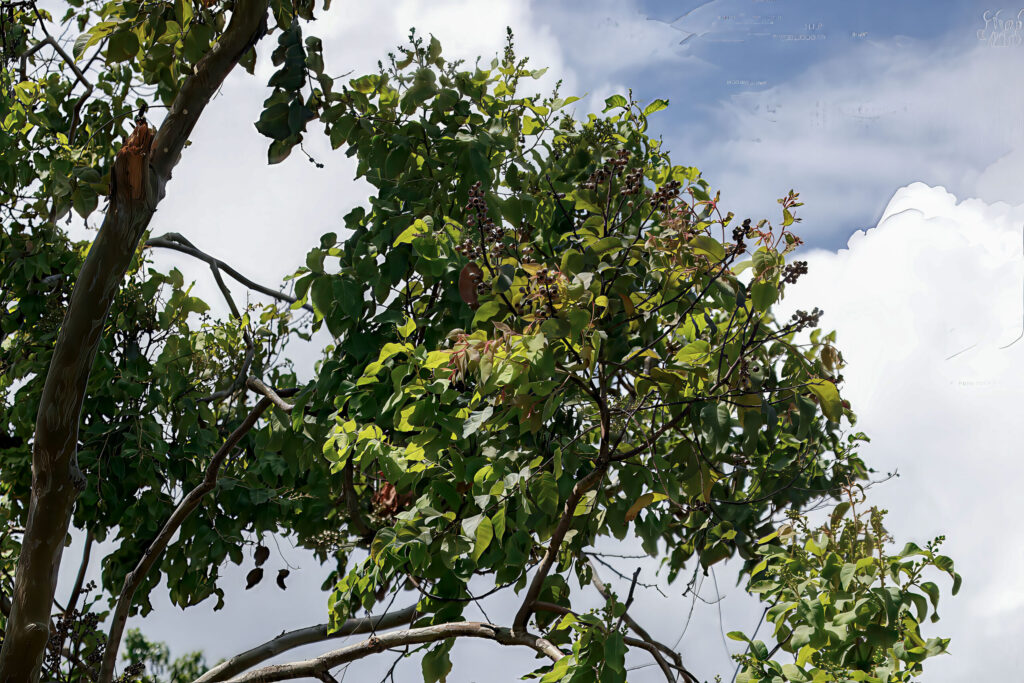
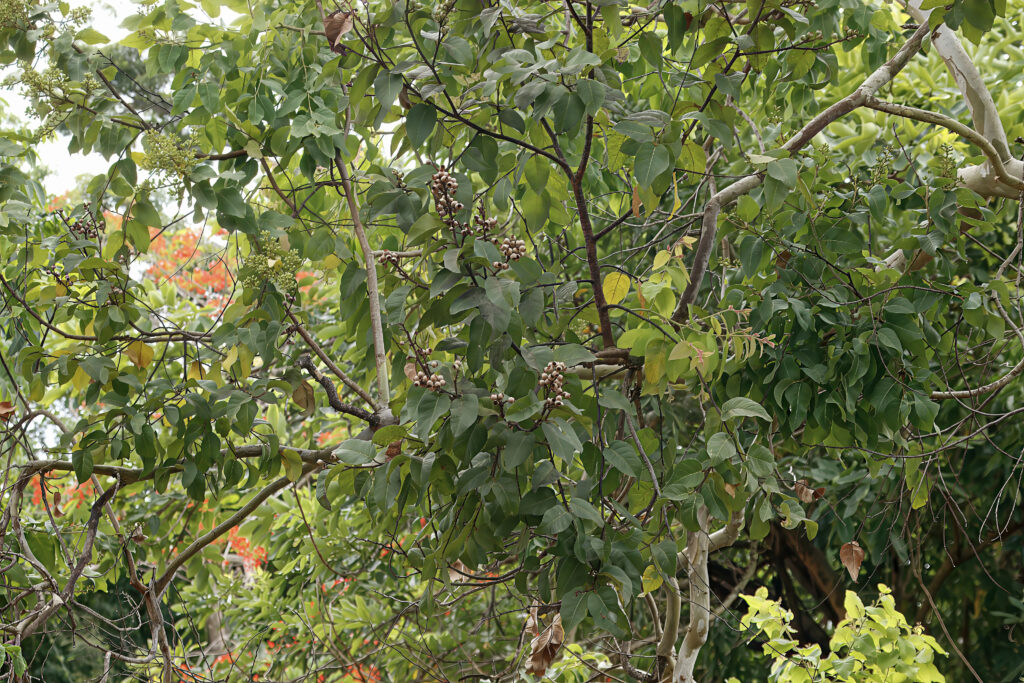
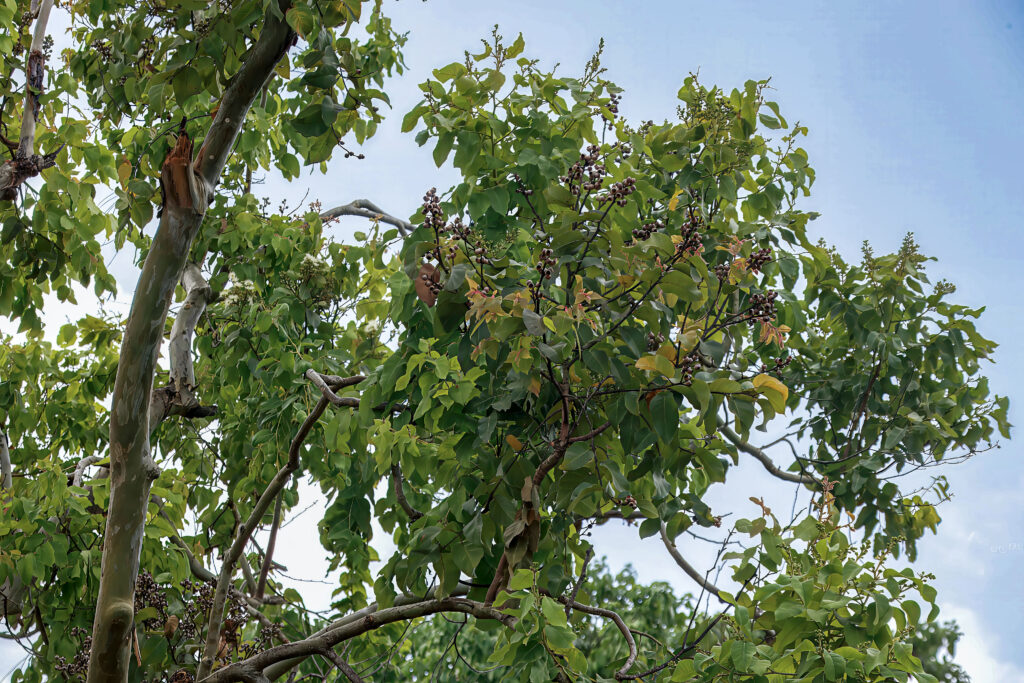
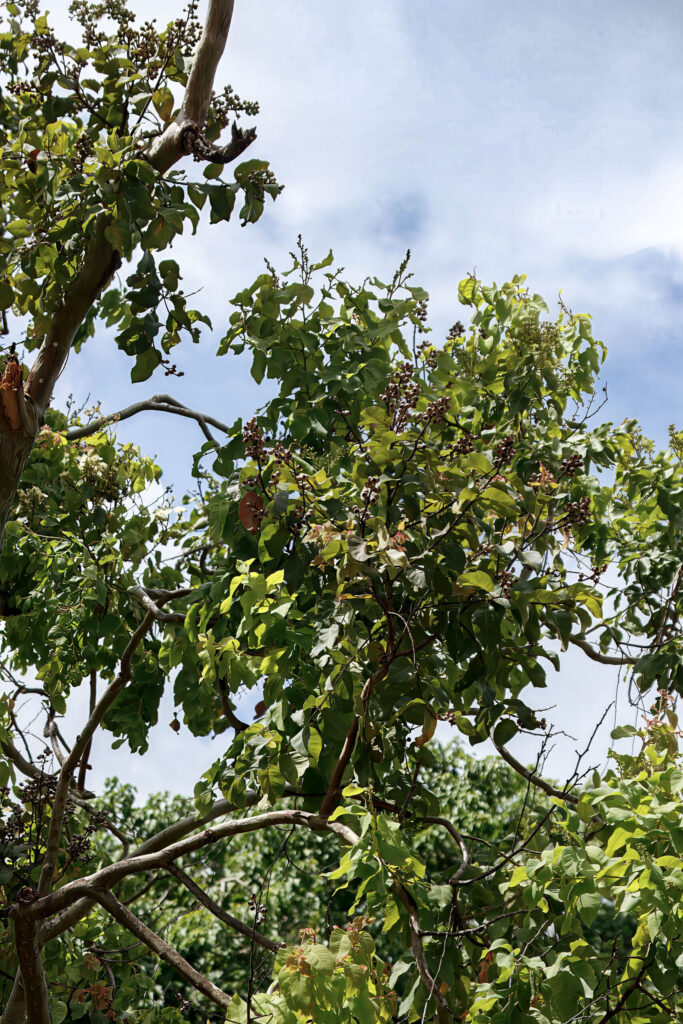
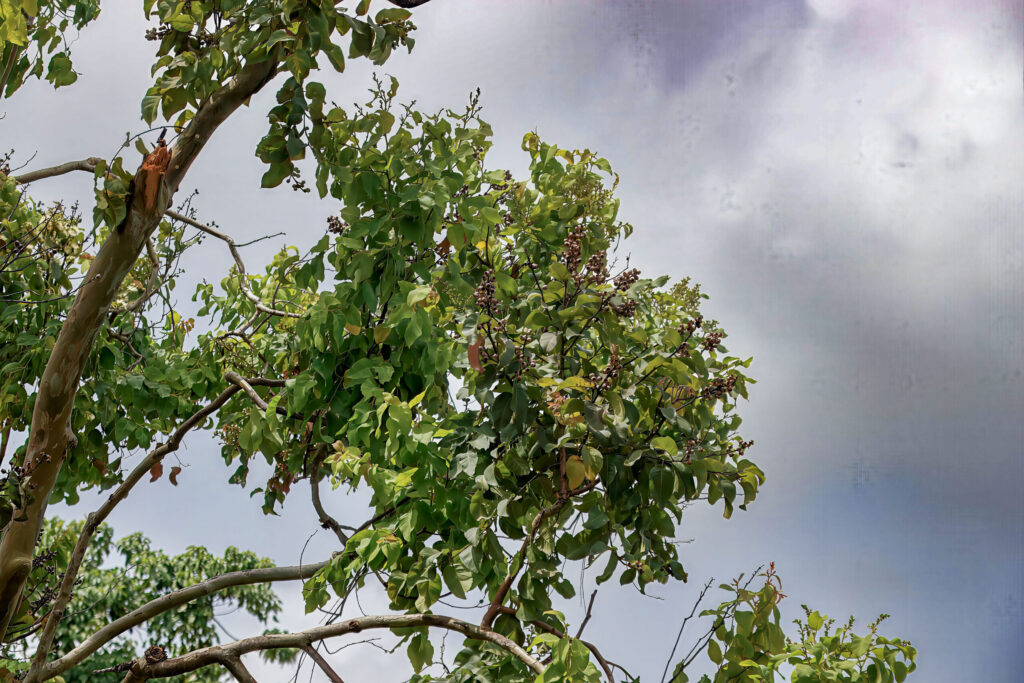
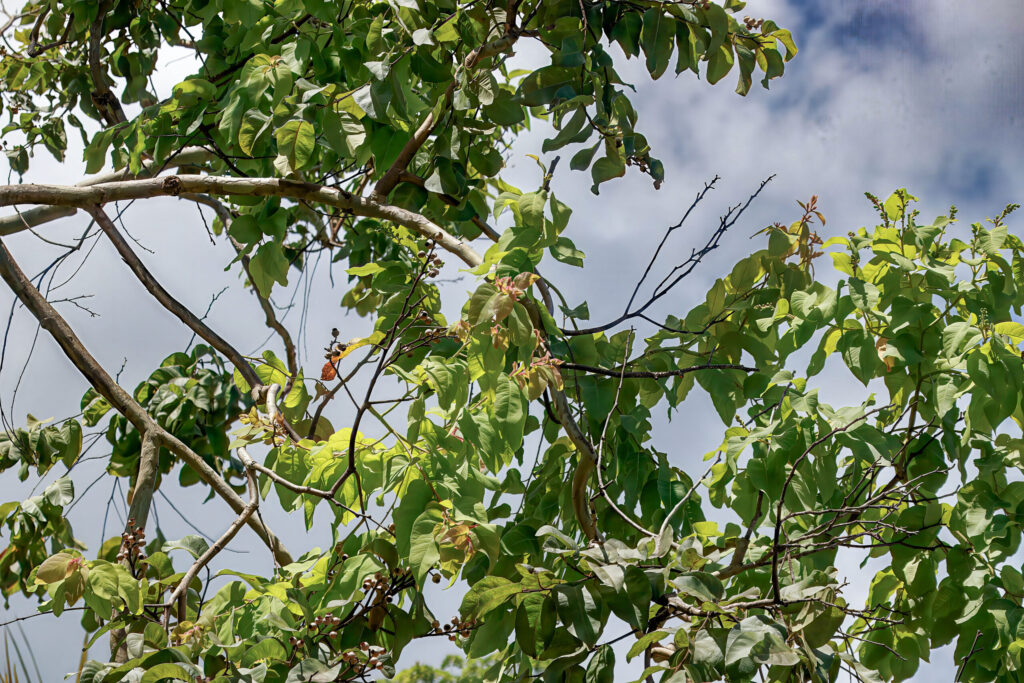
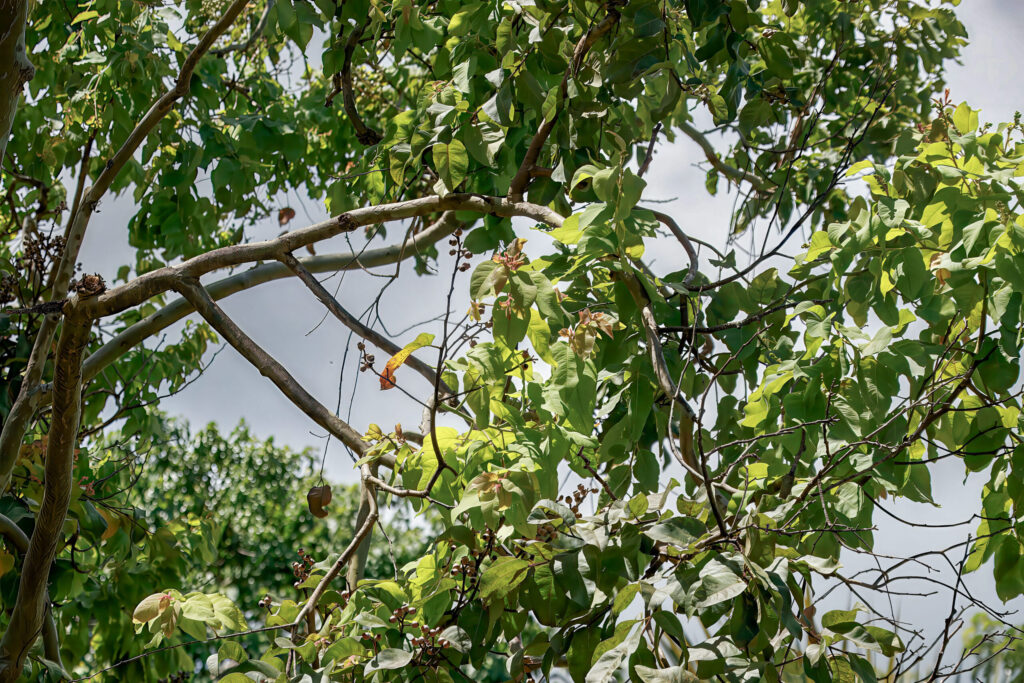




Observations:
Phenological Markers
Spring (March–May)
- Leaf Growth: New leaves emerge, typically larger and more vibrant in color
- Flower Bud Formation: Flower buds begin forming toward the end of spring, typically at the tips of branches
- Early Bloom: In tropical climates, the first flowers may begin to bloom as early as late spring, though flowering may be more concentrated in the wet season
Summer (June–August)
- Flowering Peak: The peak of flowering, with white, cream, or yellow flowers in large clusters; this attracts bees and other pollinators
- Pollination Activity: Strong pollinator activity during bloom, leading to fruit development
- Leaf Growth: Mature leaves fill the canopy, providing dense shade
Fall (September–November)
- Fruit Formation: After flowering, the tree’s distinctive woody capsules begin to develop, changing color from green to brown as they mature
- Seed Dispersal: Mature capsules open to release small seeds, which are dispersed by wind
- Leaf Senescence: Some leaf shedding may occur as the tree prepares for the dry season
Winter (December–February)
- Dormancy: Reduced metabolic activity, though the tree remains evergreen in tropical climates
- Leaf Conservation: The tree conserves moisture by reducing leaf drop and slowing photosynthesis during cooler months
- Minimal Flowering: In areas outside its natural range, flowering may stop or be minimal during this period
👁️ Observation Tips
- Flower Visibility: The creamy white or yellow flowers are showy and fragrant, often attracting pollinators like bees, birds, and bats
- Bark Texture: The smooth, peeling bark is one of the most distinctive features of the Cadaghi; observe the color changes and peeling patterns
- Fruit and Seed Capsules: Look for woody capsules that open to release small seeds, especially toward the end of the year
- Leaf Scent: Crushing the leaves releases a distinctive eucalyptus-like aroma, which is a key identifier
🌿 Ecological and Cultural Notes
- Ecological Role:
- Provides habitat and food for various species of birds and insects
- Its rapid growth and resilience make it an important species for erosion control and land reclamation
- The tree’s large canopy provides ample shade and shelter
- Cultural Significance:
- Cadaghi is often planted as an ornamental tree in tropical regions for its aesthetic value and shade properties
- Used in landscaping and occasionally for timber production
⚠️ Conservation Notes
- Invasive Potential: In some regions, the Cadaghi has shown tendencies to become invasive outside its native range, particularly in tropical areas where it adapts rapidly
- Threats to Habitat: Habitat loss in its native environment, though it’s not currently threatened or endangered
- Cultivation: Grown in tropical and subtropical regions worldwide for ornamental and environmental purposes, often without significant issues
- Management: Careful monitoring and management are recommended where it is grown outside its native range to prevent it from outcompeting local flora
